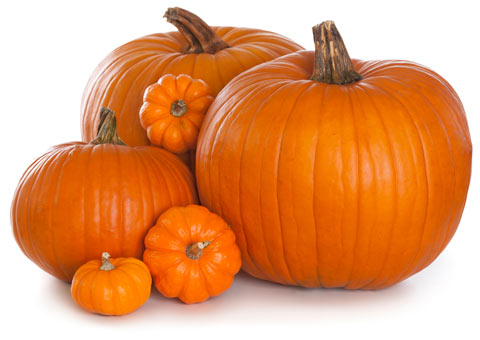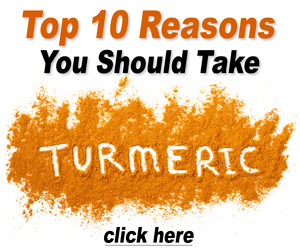Health Benefits of Pumpkin

Fun Facts:
Pumpkin pie was certainly not featured at the first Thanksgiving dinner since colonists didn't have ovens (although stewed pumpkin became common). Pumpkin was used in pies shortly thereafter by early colonists, but probably not in the way you think. Early settlers used pumpkin to make pie crust — not as a pie filling. Later pie bakers made up for it by making the largest pumpkin pie ever, weighing in at over 350 lbs. and using 80 lbs. of pumpkin in the filling. (i.254, 256)
Did you know that different parts of pumpkin are edible, including the seeds and flowers? Pumpkin, which is in the family of vine crops known as cucurbits, is native to Central America. However, the name originated from the Greek word pepon, which means large melon. The Native Americans referred to them as isqoutm squash. Varieties of pumpkin range in size significantly, weighing from under one pound to more than 1000 pounds. These fruits are composed of 90% water. (i.254)
Commonly consumed as a vegetable, pumpkins are actually a fruit. It has been used as a traditional herbal remedy in countries such as India, China Yugoslavia, and Brazil because of its antitumor, anti-inflammatory, antimicrobial, and immune-boosting properties. Modern scientific studies have uncovered many of the phytonutrients in pumpkin seeds, fruit, and flowers responsible for this beneficial activity. (i.255)
Nutrients in Pumpkins
Some of the vital nutrients that one cup of cooked pumpkin contains include: (i.257, 258)
- Iron (1.4 mg)
- Magnesium (22 mg)
- Calcium (37 mg)
- Potassium (564 mg)
- Protein (2 grams)
- Dietary Fiber (3 grams)
Beta carotene is responsible for the pumpkin's orange color, and is thought to help to prevent a number of diseases, including cancer. This is an important antioxidant that the body converts to vitamin A, another antioxidant. Antioxidants generally protect the cells from the damage that free radicals cause that can promote cancer development. Even better, pumpkins are also a good source of xanthophyll- type carotenoids. Experts suggest that consuming a mix of different carotenoids, such as carotene and xanthophyll, may be more beneficial than β-carotene alone. (i.121, 139, 257-259)
Anticancer Benefits
Lab and animal studies have shown that pumpkin fruit extracts and purified components of pumpkin fruit and seeds have cancer-fighting activity against: (i.255, 260)
- Ehrlich ascites carcinoma (rapidly growing, 100% malignancy tumor cells commonly used to model human cancers).
- Leukemia (cancer in the blood).
- Melanoma (aggressive skin cancer).
Results of recently published animal research suggest that even pumpkin flowers have antitumor effects — including suppressing pro-cancer inflammatory factors, increasing natural antioxidant enzyme levels, inhibiting tumor growth, and directly inducing cancer cell death. In this study, survival time was significantly increased in a dose-dependent manner (approximately 38% at the lower dose and 69% for the higher dosage level). Pumpkin seeds contain phytosterols, natural plant compounds that have beneficial cholesterol-lowering and immune system-enhancing effects. Phytosterols may also be cancer-preventive. (i.255, 259)
Pumpkin seeds contain alpha linolenic acid, a beneficial polyunsaturated omega-3 fatty acid that has good anti-inflammatory properties. Although inflammation is usually associated with such complications as arthritis, it is also an important component in the development of cancer. (i.110, 257-259)
Growing Pumpkins at Home
The pumpkin seeds should be planted during warm weather, as frost damages them and they do not germinate when the soil is cold. Pumpkin seeds are planted in mounds of dirt, with 5 or 6 feet separating the hills in a row for the vining varieties (3'-4' spacing is sufficient for bushy varieties). Keep rows 10 -15 feet apart to allow ample growing room for vines (4'-8' for bush plants). Plant four seeds per hill about one inch deep, thinning out the seedlings to leave 1-2 of the best plants per hill. (i.261)
The best way to avoid squash vine borers, which attack pumpkin vine stems in the spring to early summer, is to cover young plants with a floating row cover until they start to blossom. If you find any larva-infested stems you can remove the larva and recover the stem with dirt, which may allow it to recover by re-rooting. Row covers are made of lightweight, permeable material you drape loosely over seedlings and are secured by tucking the edges into the dirt around the rows or with boards. Another benefit for pumpkin seedlings in colder regions is the added soil warmth they bring. (i.262)
Squash bugs are a common pest that can decimate pumpkin plant leaves, especially in late summer. Organic gardeners recommend handpicking the pesky insects, alternate where you plant pumpkins or similar crops, and getting rid of leftover plant debris after harvesting. They are about ½" long and can be green, gray, or brown. (i.262)
Powdery mildew is a fungal disease that can attack pumpkins. Potassium bicarbonate and neem are some natural chemicals organic gardeners use to control it. (i.262, 263)
Important Information on Storing Pumpkin
- The best way of preserving pumpkin is freezing. (i.264)
- Do not use home canning for pureed or mashed pumpkin (or pumpkin butter) because it is a low-acid fruit that can develop toxic botulism. Cubed pumpkin, with more uniform density and viscosity, may be canned, but the only canning method recommended for cubed pumpkin is pressure canning. (i.264)
- You can dry pumpkin seeds in an electric dehydrator or oven at very low temperatures. 115-120° F is recommended for dehydrators, for 1-2 hours. Oven drying typically takes 3-4 hours. Be sure to wash the seeds before drying to remove any plant tissue. (i.264)
Tasty Pumpkin Ideas
Use pureed steamed or boiled pumpkin in soups, pies, and breads. (i.254)
After drying you can toss seeds with oil and seasonings (such as salt, cayenne pepper, chili mix, or cumin) and roast them at 250° for 10-15 minutes. (i.264)
The first flowers pumpkins produce are typically male and do not produce fruit. However, they can be picked and the petals separated and added to pancakes for added nutrition. (i.254, 261)



